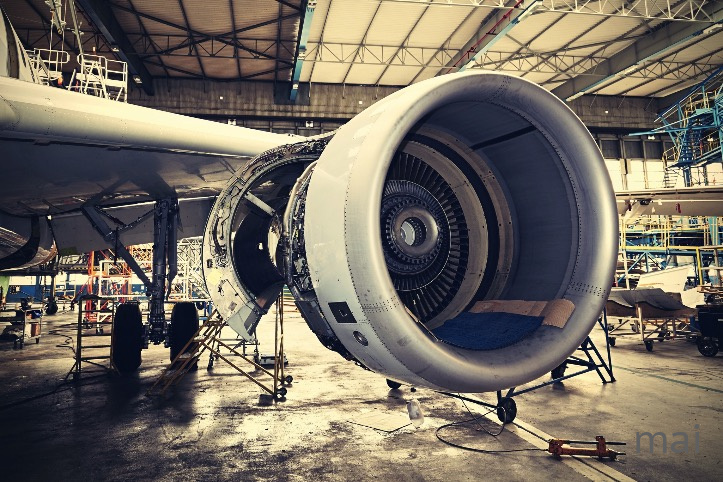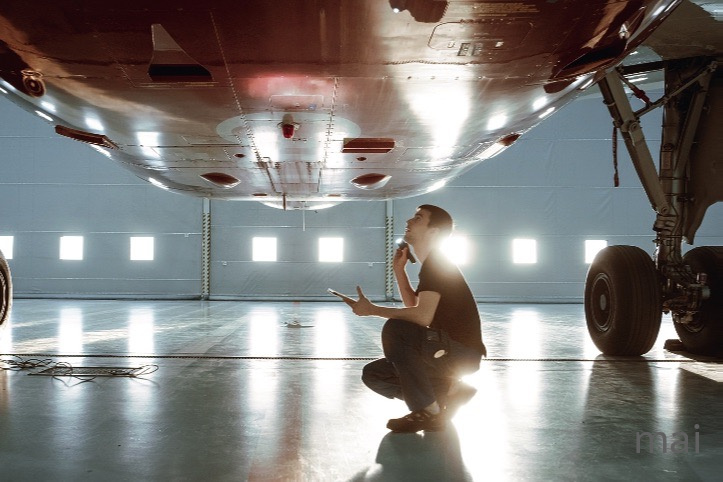Service of the Future in Aviation and MAI

One of the global trends today is a pronounced transition fr om the sale of goods to services. This process of "servicing" is primarily due to the fact that the service sector is turning into a driving force of the world economy, which requires a change in the worldview of the heads of organizations and the adjustment of management, marketing and logistics strategies.
The modern stage of the international relations’ formation is characterized by the rapid development of new forms of foreign economic relations and, above all, the services market. A characteristic feature of modern society is the production of services and information, which today significantly exceeds the production of marketable products. Evidence of this is, for example, statistics from countries in Western Europe, the USA, and the Asia-Pacific region. In today's post-industrial society, information services at different levels of economic activity are increasingly included in the material structure of production and consumption.
Sharing Economy: Why and What for
Sharing economy is an economic model, a peer-to-peer system based on the collective use of goods and services. The economy still has two basic things, production and consumption, but the links between them are greatly transformed. Sharing economy allows you to link directly key economic agents and distribute products and services between them without the participation of intermediate seller. Joint consumption suggests that it is more convenient to pay for temporary access to benefits than to own them.

The practice of sharing dates back to ancient Greece, individual elements of such an economic system can be found in any era (remember the collective farms in Soviet times). Libraries, second-hand are also an example of shared consumption. Today, the sharing economy is fully placed on the market rails, and there is no coercion in it. Instead of a hotel, you can use someone else's apartment for a short time, and for a short bike ride you can rent it.
In the era of the digital revolution, the sharing economy grows potentially. If in 2014 its volume was estimated at $ 14 billion, then, by some estimates, by 2025 it will be $ 335 billion.
Global Trends
The air transport industry is quite conservative, but all the trends listed above have already significantly influenced it and will drastically change it in future.
Initially, the classic service for the provision of after-sales support of aircraft was only a supplement to sale of aircraft. It is mainly focused on fulfilling the obligations of the manufacturer to maintain airworthiness of the aircraft. However, with the increase in the world aircraft fleet, the market for maintenance, repair, and overhaul (MRO) services began to develop actively. Like the air transport market, the maintenance and repair service market is highly competitive.
The main factor of competitiveness in these markets is minimization of maintenance and repair costs for aircraft, which account for about 20% of all operating expenses of an airline. Therefore, optimizing aircraft maintenance is one of the priority tasks for each carrier. Airlines increasingly expect from (MRO) services market providers the offer of various discounts on services that would outweigh the benefits of maintaining their own internal MRO service organization. Taking into account the significant financial advantages of the so-called Total Care programs, more and more carriers prefer integrated services under the flight hour payment scheme (PBH – Power by the Hour).

Economic Component
The financial aspect is extremely relevant to the MRO, especially when it comes to engines, components or basic maintenance. Aviation companies prefer to avoid costs not directly related with air travel, and use the savings to purchase new ships, improve service quality, or introduce additional services for passengers. In a competitive market, the MRO provider must share possible risks with the client and create the conditions necessary for achieving the best performance indicators.
The optimal contract for aircraft maintenance is a combination of three components: a fixed payment rate, cost sharing and payment in accordance with the results of the evaluation of indicators.
Since the investment in development and maintaining its own MRO infrastructure can be overwhelming for many, especially young airlines, all sorts of total support packages and PBH programs are gaining popularity. This trend is particularly noticeable among small fleet airlines and low-cost carriers.
Fee for Time, not for Work
Such a scheme suggests that the MRO organization receives money not for the maintenance work done, but for the smooth operation of the air vessel or its specific component. The provider receives fixed periodic payments for a specific number of flight hours performed by the aircraft or one of its units for a certain period of time, and must perform all the necessary maintenance work at its own expense, regardless of its cost.
The advantage of the Total Support scheme is that the MRO provider assumes most of the technical risks. Therefore, he is naturally interested in the most efficient performance of work.
In addition to the motivation of the MRO provider, the Total Support scheme has a number of other benefits. To keep a large number of spare parts is not only expensive, but also inefficient for the airline. A carrier may invest $ 100–200 million in its own stock of spare parts, but still it will not be able to be fully prepared for all sorts of problems.

In the framework of the PBH agreement the MRO service provider assumes the costs of maintaining the necessary infrastructure and inventory, and the carrier pays for the flight hours of the use of the units. So, even for airlines owning up to 25 aircraft of the same type, it is advantageous to sign PBH contracts, due to which they can forget about huge investments in operating even the smallest warehouses.
As practice shows, carriers choose PBH schemes for various reasons, but the key argument is the peace of mind that carriers get, free from unplanned maintenance and repair costs.
Of course, larger airline companies may have the financial ability to purchase spare parts in unforeseen situations, which is not the case with small fleet airlines. The PBH agreement implies that responsibility for resolving situations dependent on aircraft-on-the-ground components, which can cost the carrier up to $ 150,000 per day, falls on the MRO provider.
In turn, the PBH agreement allows carriers to reduce costs and avoid the need to maintain expensive MRO infrastructure. In addition to the fact that airlines have the opportunity to save significantly, they can also plan their maintenance budget more precisely.
Learn to Predict the Cost of Life Cycle
The PBH support can, in principle, improve the financial position of small airlines, but its benefits depend on the terms of a particular contract. This scheme requires a carefully selected hourly rate, which requires an accurate prediction of the cost of the unit's life cycle and the life cycle of the aircraft itself. Otherwise, either the carrier receives too expensive services, or the MRO provider suffers losses. That is, the calculation of the cost of the MRO life cycle and the full cost of the life cycle of the aircraft today is a highly relevant and popular service on the market.
To solve such problems within the framework of MAI, in November 2018, the center “Service of high-tech products” was created. One of the first projects implemented within the framework of the new center, is the creation of a service for predicting the cost of maintenance and repair of aircraft.
But it turned out that such a service for predicting the cost of life cycle is in demand not only in the air transport industry, but also in other industries wh ere high-tech products are operated, the life-cycle cost of which is high and determines the competitiveness of its users.

At the same time, the aviation approach to MRO is the most suitable universal base, which allows you to structure and optimize the MRO activity of high-tech products, a vivid example of which is aviation technology in terms of high complexity and cost.
This is explained by the fact that the history of the aviation technology operation has already more than 100 years. During this century of aviation, the highest level of safety was ensured in the operation of aviation equipment by introducing the aviation rules that were “written in blood” according to the results of the investigation of air crashes.
The highly competitive environment of air transport made the MRO approaches to aviation technology the most advanced basic methodology that allows high-tech products to be operated safely, with a minimum life cycle cost.
In the general sense, the service begins with a smile from the service personnel and the subsequent caring attitude towards the customer. Whereas in the engineering environment, service is mostly attributed solely to the after-sales service stage, as a set of services that allow to use the product with maximum efficiency.
Obviously, for commercial success, the service should accompany all stages of the product life cycle, therefore, should be laid in the design, taking into account the trends of the global industry and the wishes of potential customers. It is necessary to avoid later design and production flaws and inconsistencies of the product and thereby ensure the declared operational characteristics of the product, which will eliminate the mutual unplanned costs of the developer and customer and will lay the foundation for further mutually beneficial business relationships.
Only from this angle we can speak of the development, production, sale, operation and support of the item as a competitive product.